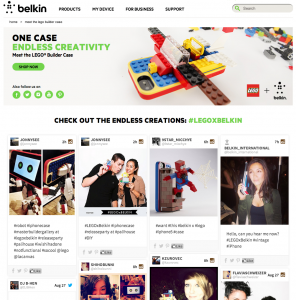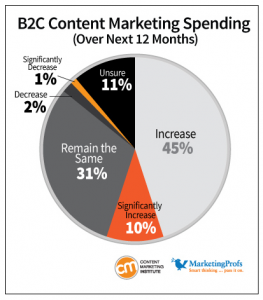Trousdale, S. (2015) details how exploiting the latest trends can help businesses stand out from the crowd. Rapidly changing environments within the digital world pose constant challenges to business in terms of which channel will make the biggest impact. However, on the other hand, rapid change has fuelled digital marketing with technology giants driving Facebook and Twitter. One factor that is continuously constant though is that there will be change. It is being aware of changes and how to utilize this which will make the difference.
This blog post will focus around the topic of emerging strategies for the Digital Marketing World which if read into appropriately could pose potential strategic advantages (hint hint!)
Personalization
Through the use of big data, it is easier for brand interaction which is highly relevant and tailored to specific individuals to become input. Data providing information on individuals online, social behaviours, shopping history, preferences and tastes have been made available to businesses enabling businesses to strategically utilize this information and provide a more personalized touch to their endeavours. An example of a company who do this well are Amazon. See below.
Retargeting
Pay-to-display advertisements to consumers based off of previous interactions with the site are becoming popular. For example if a user didn’t complete checkout, websites such as AdRoll and Facebook Custom Audience enable ads to be displayed encouraging consumers to come back and complete purchases. I have experienced this quite a few times! Whenever I have been doing a (cheeky) shop but then realized I don’t need the item, put it back and then continued with my social media activities, occassionally the item will appear on Facebook and I always thought it was mere coincidence – how foolish was I!
User Generated Content
Advertising agencies and brandscan utilize their fan and customer base through using their authentic and original content to power their marketing campaigns. Also, through this, a wider sense of community can be established and maintained as consumers actually feel involved within a campaign. An example of this was the Lego phone case idea. See below.
Predictive Analytics
Gains, B. (2015) states that companies such as Lattice and Mintigo are helping B2B companies with better lead scoring and prioritization without hiring a team of data scientists to get those insights. As well as guiding future marketing activities like automated drip campaigns.
Storytelling
A lot more of digital marketing endeavours are focused around being human-centric and story focused content that conveys raw human emotion. Such as the Facebook advert below, posted both on Facebook and available on TV. Trousdale, S. (2015) detailed that companies should share more image/video based content such as the highlighted Facebook example as this increase engagement and boosts shareability.
Finally, Ryan, D. and Jones, C. (2009) state that expenditure on online advertising will continue to increase and that WOM and digital savvy consumers control the future as technology is enabling people to maintain this hold.
However, the hype cycle has been highlighted by Consult Club at IIMA (2015), developed by IT research and advisory firm Gartner for representing maturity, adoption and social application of specific technologies. This diagram aims to assess technologies and how they move through diferent phases of hype and indicate whether they are good short and long term. Most technologies in peak of their hype cycles today will plateau in terms of producticivity within two years thus making it hard to gain competitive advantages in fast paced environments such as this. Companies need to quickly adapt accordingly. However, this is simply a theory and it could be argued that it is very difficult to objectively estimate the current location of a technology in its hype cycle. See the model below.
Five phases of the hype cycle
So that marks the end of the emerging trends I have identified for 2015, let’s see how things pan out!
References
Consult Club at IIMA, (2015). Hype Cycle for Emerging Technologies in Digital Marketing. [online] Available at: https://iimaconsulting.wordpress.com/2015/01/01/hype-cycle-for-emerging-technologies-in-digital-marketing/ [Accessed 20 Apr. 2015].
Gains, B. (2015). 10 Emerging Trends in Digital Marketing for 2015. [online] Referral SaaSquatch. Available at: http://www.referralsaasquatch.com/10-emerging-trends-digital-marketing-2015/ [Accessed 20 Apr. 2015].
Ryan, D. and Jones, C. (2009). Understanding digital marketing. London: Kogan Page.
Trousdale, S. (2015). What are the emerging trends in digital marketing?. [online] Businessinspiredgrowth.com. Available at: http://www.businessinspiredgrowth.com/business-insights/2015/01/22/what-are-the-emerging-trends-in-digital-marketing/ [Accessed 20 Apr. 2015].












